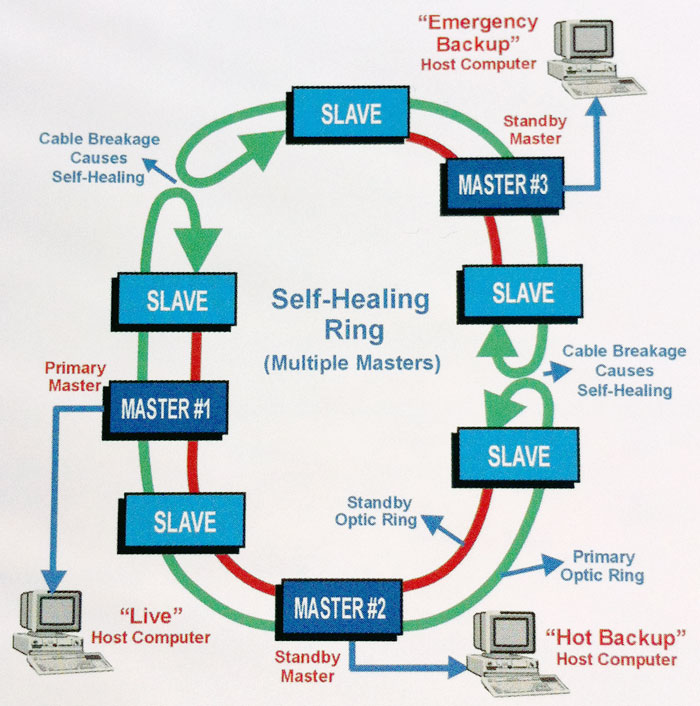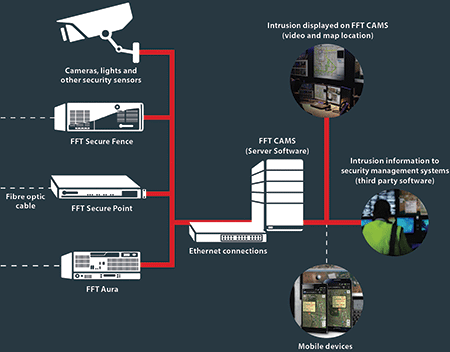Setting Up a Fiber Optics Infrastructure for Security Installations in Your Building
Setting Up a Fiber Optics Infrastructure for Security Installations in Your Building
Blog Article
Why Fiber Optic Safety And Security Systems Are the Future of Defense
The change to fiber optic safety systems notes a considerable development in the world of security, driven by their exceptional information transmission abilities and durability to external interferences. These systems not just assist in faster and extra trustworthy interaction but also provide an economical solution with reduced maintenance requirements. As the landscape of safety advances along with arising modern technologies such as AI and IoT, the capacity for fiber optics to enhance and redefine safety infrastructures ends up being increasingly obvious. Nonetheless, the effects of these innovations elevate essential questions about the future of protection actions and their efficiency in an ever-changing atmosphere.
Advantages of Fiber Optic Systems
Among the primary advantages of fiber optic systems is their premium data transfer ability, which facilitates the transmission of large quantities of information over cross countries without considerable loss. This characteristic is specifically advantageous for security applications that call for the continual monitoring and transfer of high-definition video feeds, sensor information, and various other important info. Fiber optics can suit the growing demands of modern security systems, ensuring that data continues to be intact and reliable.
In addition, fiber optic cable televisions are less susceptible to electromagnetic disturbance, which can be a significant issue in environments with numerous electronic tools. This resistance boosts the stability of the information being transmitted, thereby minimizing the threat of data breaches or system failings. In addition, fiber optic systems are inherently a lot more protected than traditional copper cables, as taking advantage of a fiber optic line without discovery is extremely difficult.
The durability of fiber optic cords additionally contributes to their charm. They are immune to environmental variables such as dampness and temperature variations, decreasing upkeep expenses and raising system durability. Generally, these benefits position fiber optic systems as a durable and effective selection for modern-day protection frameworks, guaranteeing reliable and safe data transmission.
Enhanced Information Transmission Speed

The ability to transmit vast quantities of data rapidly assists in the seamless integration of high-def video clip feeds and progressed analytics. Protection systems can now refine and examine information in real-time, boosting response times and situational understanding. Furthermore, fiber optic links support longer transmission distances without deterioration of signal top quality, making them optimal for extensive protection networks.
The increased speed of fiber optic systems not just enhances the efficiency of safety and security procedures but additionally lowers latency. This is especially vital in crucial situations where prompt decision-making can protect against protection violations or mitigate potential hazards. As organizations remain to focus on safety and effectiveness, the demand for rapid and reputable information transmission will most certainly solidify fiber optic systems as a cornerstone of contemporary security facilities.
Resistance to Disturbance
Fiber optic security systems consistently show exceptional resistance to electromagnetic disturbance, an important advantage in settings susceptible to electronic noise. Unlike traditional copper cords, which can be negatively impacted by magnetic fields, superhigh frequency interference, and various other forms of electric disruption, fiber optic cable televisions utilize light to transfer information. This intrinsic property makes sure that the signals continue to be clear and unchanged, no matter surrounding digital task.
Using glass or plastic fibers in fiber optic technology develops an obstacle versus interference, enabling for trusted data transmission even in tough circumstances such as industrial facilities, metropolitan areas with high electronic web traffic, or areas near radio towers. This characteristic dramatically minimizes the chance of signal deterioration or loss, making fiber optic systems especially suitable for security applications where honesty and precision of information are extremely important.
In addition, this resistance to interference improves the total efficiency and integrity of protection systems, making certain that surveillance and sharp systems function flawlessly. In a globe where safety is progressively threatened by directory sophisticated technologies, the durability of fiber optic systems attracts attention as a crucial feature, reinforcing their condition as a crucial component of modern protection framework.
Cost-Effectiveness Over Time
Significant expense financial savings can be attained with time with the application of fiber optic safety systems. While the preliminary financial investment may appear greater contrasted to conventional copper-based systems, the lasting monetary advantages come to be noticeable through decreased operational and maintenance expenses (fiber security). Fiber optic cords are naturally extra sturdy and much less at risk to ecological aspects, which translates to decrease replacement and fixing expenditures over their lifespan
In addition, fiber optic systems need much less power to operate, which further lowers power expenses. Enhanced information transmission capabilities enable fewer repeaters and amplifiers, lessening devices financial investment and improving setup procedures. The scalability of these systems also adds to cost-effectiveness, as organizations can broaden their safety infrastructure without sustaining significant added expenses.
One more variable to think about is the raised efficiency in surveillance and response capacities that optical fiber supply. Enhanced real-time information transmission can cause quicker event response times, potentially mitigating losses and responsibilities associated with security violations. In sum, the long-lasting benefits of fiber optic safety systems not only validate the initial expense but additionally place them as an economically prudent selection for companies looking for durable protection services.

Future Developments in Protection
Advancing technologies are set to transform security systems, integrating expert system (AI) and equipment discovering to enhance hazard detection and feedback capabilities. These innovations will permit protection systems to evaluate substantial amounts of information in real-time, identifying patterns and abnormalities that suggest possible hazards. This aggressive method will certainly make it possible for much faster decision-making and more efficient event responses.
Furthermore, the unification of the Web of Points (IoT) is leading the way for interconnected security devices, offering comprehensive surveillance and tracking. Smart sensing units can pass on information about environmental modifications, while automated signals can inform safety employees immediately of questionable tasks.
Furthermore, the evolution of biometric modern technologies will even more get more strengthen security mechanisms. Face recognition, fingerprint scanning, and retina recognition are ending up being much more innovative, offering layers of authentication that are tough to bypass.
Final Thought
Finally, fiber optic security systems represent a substantial development in protection innovation, using unequaled information transmission speed, resistance to electro-magnetic disturbance, and long-lasting cost-effectiveness. As the demand for innovative safety and security options continues to grow, the assimilation of optical fiber with arising modern technologies such as AI, IoT, and biometrics will read more further enhance security facilities (fiber security). The combination of these advancements will make certain an extra safe and receptive setting, strengthening fiber optics as a foundation of future protection systems
Report this page